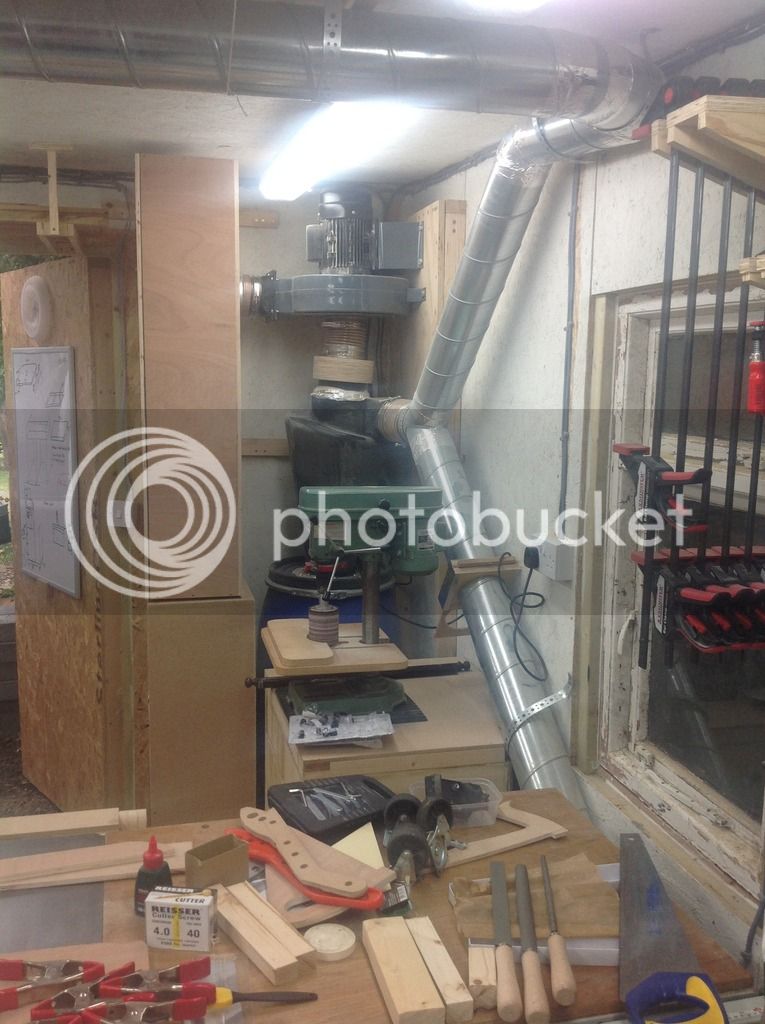Hi Guys,
I'm new to the whole workshop thing, i've recently built a 4x4m cabin that's my first proper workshop and after a (LOT) of deliberation i'm going to purchase an Axi AW10BSB2 tablesaw to start things off.
What i've no real idea of is dust collection in a workshop, using large diameter piping/tubing. I already have a Festool CTL26 which has been superb for all of my handtools so i would ideally like to try and get away with continuing to use this (i know this isn't its exact role.)
So, i was planning on buying a cyclone to try and extract as much of the larger debris as possible before it gets to the vac, as to which one? i've no idea... i've read so many conflicting things about whether i need to get fancy conductive plastic ones, or don't need those as it is a hobby use so static won't be a problem(?) does anyone have any advice/suggestions on this to start with?
The next thing i've no clue on is diameter/hose setup. The axi saw has a 100mm outlet, so somewhere i either need to include a stepper down, quite a few of the cyclones ive seen seem to have somewhere in the region of 50-66mm connections. What would be the ideal connection size from the size to the cyclone then from the cyclone to the vac?
I'd ideally like to try and incorporate a Y connector somewhere in the system as well so i can use my 27mm festool hose for my handtools.
Lastly... i've seen a few people mention that if at all possible, using piping is better than flexible hose(?) which shouldn't be a problem as nothing will really be moved once in position.
*At some point in the future, i will probably add a small bandsaw and small thickness/planer (which i realise my extractor is even less ideal for... but could i get away with occasional use with a cyclone?) thought it worth mentioning now as i'm trying to set it up.
Hopefully someone can give me some sensible, and reasonably cost effective advice as i think i've got a case of seeing too many different opinions at the moment.
Thanks a lot guys.
I'm new to the whole workshop thing, i've recently built a 4x4m cabin that's my first proper workshop and after a (LOT) of deliberation i'm going to purchase an Axi AW10BSB2 tablesaw to start things off.
What i've no real idea of is dust collection in a workshop, using large diameter piping/tubing. I already have a Festool CTL26 which has been superb for all of my handtools so i would ideally like to try and get away with continuing to use this (i know this isn't its exact role.)
So, i was planning on buying a cyclone to try and extract as much of the larger debris as possible before it gets to the vac, as to which one? i've no idea... i've read so many conflicting things about whether i need to get fancy conductive plastic ones, or don't need those as it is a hobby use so static won't be a problem(?) does anyone have any advice/suggestions on this to start with?
The next thing i've no clue on is diameter/hose setup. The axi saw has a 100mm outlet, so somewhere i either need to include a stepper down, quite a few of the cyclones ive seen seem to have somewhere in the region of 50-66mm connections. What would be the ideal connection size from the size to the cyclone then from the cyclone to the vac?
I'd ideally like to try and incorporate a Y connector somewhere in the system as well so i can use my 27mm festool hose for my handtools.
Lastly... i've seen a few people mention that if at all possible, using piping is better than flexible hose(?) which shouldn't be a problem as nothing will really be moved once in position.
*At some point in the future, i will probably add a small bandsaw and small thickness/planer (which i realise my extractor is even less ideal for... but could i get away with occasional use with a cyclone?) thought it worth mentioning now as i'm trying to set it up.
Hopefully someone can give me some sensible, and reasonably cost effective advice as i think i've got a case of seeing too many different opinions at the moment.
Thanks a lot guys.



































